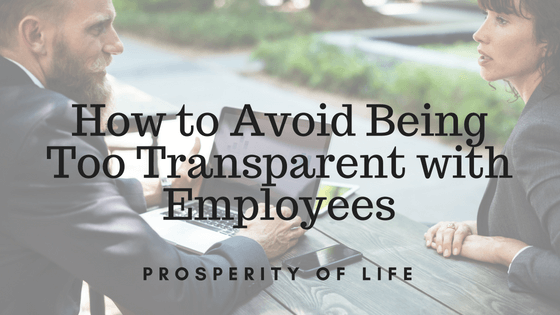Transparency can help you create a positive work environment, but too much of a good thing can become a problem. For example, when mistakes cause setbacks for your firm, your team members could become preoccupied with blaming the responsible party rather than working to find a solution.
Additionally, businesses that want to increase transparency need to beware that some tactics may backfire, resulting in increased employee distrust. To avoid this, you should choose from the best ways to build transparencywhile guarding against becoming too intrusive. The following tips will help.
Understand Why
Before going all-out in making transparency a policy in your workplace, understand what you want to accomplish. Next, create a plan to implement transparency to achieve your goals. Such a thoughtful, intentional approach to transparency can keep you from going overboard.
Also, make sure that your employees understand that you have practical reasons for your transparency policy. Otherwise, you cause resentment and distrust by appearing to desire too much control. So, spend time informing your team why transparency, in certain cases, makes good sense for everyone.
Emphasize Training
Transparency may make your employees feel vulnerable, especially if they are unsure about the criteria used to assess their performance. Avoid this by taking measures to ensure that you and your policies seem fair.
To begin with, make sure that you have an adequate employee training program in place. This way, your employees can develop their skills and increase their confidence and performance. Additionally, let everyone know how their work will be assessed so no one worries about surprises during performance reviews.
Avoid Misuse
Use transparency in your organization only for its stated purpose. If you collect too much information or monitor too many actions, you set the stage for abuse. Remember that your goal is to improve your business, not to point fingers at people when they do something wrong.
Demonstrate that transparency is good for everyone by forgiving mistakes and responding to them with targeted training and constructive feedback. This will help everyone regard errors as learning experiences that strengthen them and the business.
In summary, you can avoid being too transparent with employees while building an accountable, trusting and fair work environment. By achieving the right balance, you will increase employee engagement and become more productive.

